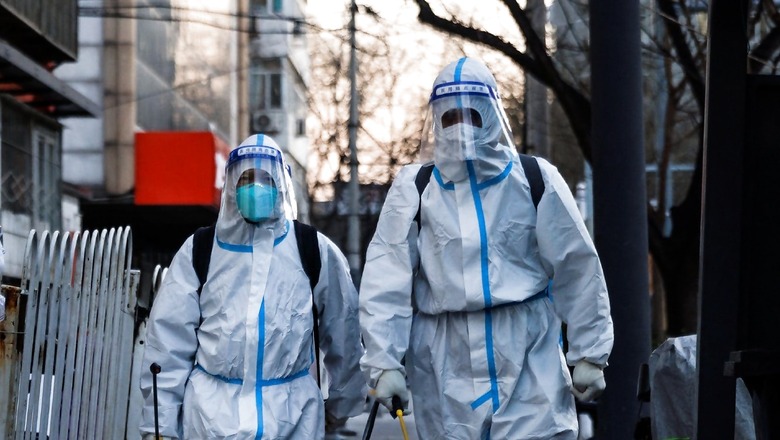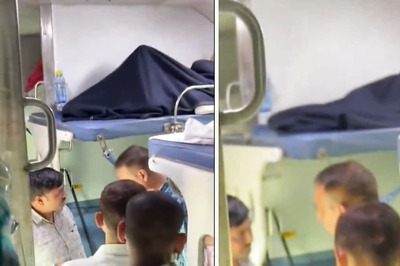
views
India has already seen a few cases of the BF.7 Covid strain in the past but that did not lead to a surge in infections across the country or an increase in the severity of the disease, co-chair at INSACOG’s advisory board Dr Saumitra Das told News18.com in an exclusive interaction.
The recent surge in Covid-19 cases in China is believed to be driven by the BF.7 subvariant of the Omicron strain.
The Indian SARS-CoV-2 Genomics Consortium, or INSACOG, is a group of over 50 laboratories to monitor genomic variations in the Covid-19 virus. Genome sequencing is a technique used to identify and understand the characteristics of new virus strains.
“The sublineage BF.7 belongs to Omicron and it’s similar to BA.5 with additional mutations,” Das, a professor and a microbiologist at the Indian Institute of Science (IISc), said. “We have seen at least one to two cases of BF.7 in India but there was no momentum or no threshold was breached. In the last three months, the number of cases has not gone up and there was nothing alarming.”
He believes that if the country would have noted a huge surge in cases, INSACOG must have been alarmed due to the presence of this sublineage by now.
“The lineage was already present in India but it hasn’t shown any alarming trend. While precaution is always a good stand, there is no reason to be in panic mode,” said Das.
Why is this strain more effective in China?
While some experts have in fact said that we don’t know much about what variant is dominant in China since the genomic surveillance data is scanty, they believe one can only safely assume an Omicron sublineage.
Even if it’s the BF.7 strain, there could be multiple reasons why it is more effective and wreaking havoc, Das added.
Firstly, Das said, the majority of India’s population is vaccinated with two doses which means they are protected against severe disease.
“Secondly, Indians have acquired immunity via multiple natural infections. The omicron wave, which swept the majority of the population in a very short span, was a blessing in disguise,” he said.
In the second and third waves, many people got the infection and eventually acquired natural immunity which is superior to vaccine-given immunity, said Das. “This immunity might be missing in China due to their zero-Covid policy and lockdowns to prevent infections,” he said.
Another point is the “genetic determinants”, he said. “It depends on our genetic makeup that how our bodies will react to a certain lineage or sublineage. If something is impacting the body of people in China, it may not impact in the same way on Indian people.”
Also, he added, India has seen the terrible second wave and has learnt how to handle the waves. The way China has handled the pandemic with a zero-Covid policy is also questionable, he said.
Christmas-New Year travel causes increase in Covid cases
There is no scientific reason behind this trend but we have been observing a similar trend starting in 2020 when the UK strain – alpha – started spreading during the New year-Christmas from one country to the other one, said Das.
“In 2021 last year, at the same time, Omicron started spreading,” Das, who was a former director of the Kolkata-based National Institute of Biomedical Genomics, said. “Hence, it is important to be aware that one needs to restrict travel and maintain covid hygiene including maintenance of social distancing, especially when you are in a group of unknown people whose travel history is unknown.”
He advised that “if you are not sure about someone’s exposure, you must wear a mask and keep a distance. We should not give an advantage to the virus to spread. For those who haven’t taken the booster shot or whose second dose is pending, it is the right time to take them.”
Role of INSACOG
According to Das, the INSACOG network will now try to test as many samples as possible.
“The objective is to not miss any variants apart from the routine surveillance efforts,” he said.
Testing samples from the airport are extremely important as they restrict the entry of new variants into the country, Das said.
“Apart from this samples picked from sewage surveillance are also crucial as they help in catching the new variants 15 days earlier than causing the outbreak. Otherwise, routine samples will be checked and the capacity will be jacked up for all of this,” he said.
Read all the Latest India News here




















Comments
0 comment